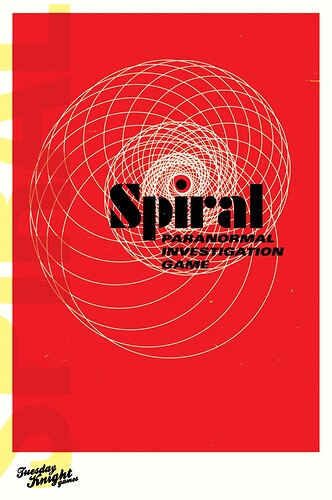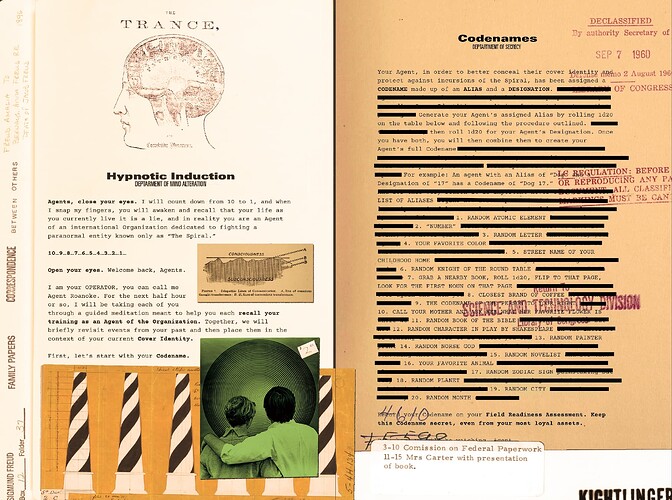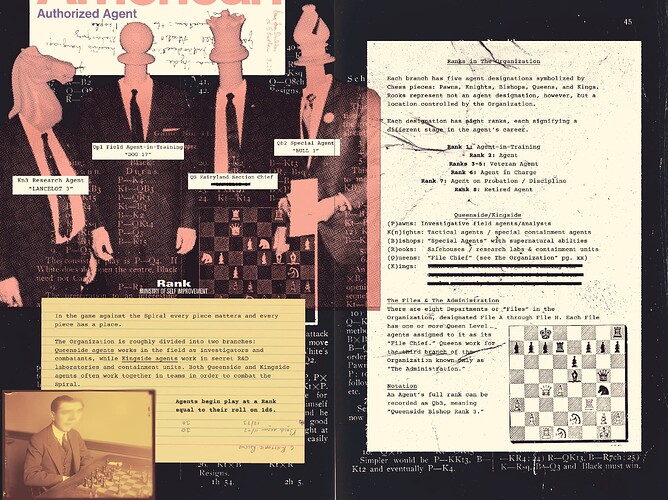NSR:
I’d love to hear how you think about and implement information design in Mothership and ttrpgs at large. It would be great to hear about determining placement for information in rulebooks, separating advice or time dependent events such as the Warden Educational Support in Another Bug Hunt and Phase Alterations in A Pound of Flesh, and anything else you’d like to about graphic design serving the text.
Sean:
So this is a big question, so I’ll answer it as best I can and if you want to dive deep on a specific topic please fire away.
So there’s a couple things we’re talking about here: the way we present information (like it’s order and format) and its aesthetics (the look of the book).
Let’s start with how we present information, talking first about the Warden’s Operations Manual. This one was the trickiest nut to crack but it’s indicative of the types of problems you’ll run into when making a book like this.
So like, what’s a good example of a DMG? Right? The 1e AD&D DMG is the classic. Apocalypse World’s MC stuff is great as well. I really enjoyed lotfp’s Referee’s guide from their Grindhouse Boxed set years ago. There aren’t a ton of these. And then like, what’s the right way to order the information?
At first we started with just like table and resources. Random planets. Random NPCs, etc. Really useful gameable stuff. Then we thought about like oh what if it’s just advice? Like essays on how to do this and how to do that. There was stuff from both categories that was really important to me. So how do we get where we want to go?
We started by dividing things up by topic. Economics. Ship stuff. Combat. What’s the best order? I worked on this for a few years honestly between other projects
Ultimate it hit me that I wanted to imagine the read was someone who had never ran an rpg before. Maybe they’d played in one, maybe they were brand new. But my thought went “everyone is getting their information on how to run rpgs from 5e or Critical Role or some other AP and mothership is different! We have to train our own wardens and just can’t rely on them picking up this information through osmosis.” In essence we need to rapidly onboard new wardens and equip them to get out there and start running games. The more wardens, the more games, the more games the more players, the more players, the more books we sell. Your referees are basically your front line evangelists for your game. If you’re not equipping them, you’re not supporting them, you’re letting basically your volunteer salespeople go out there without any help. It’s a bad strategy if you want to grow your game.
So then the order of operations became really clear. What do you need to know if you’re going to run this game? You need to prep a session, run that session, then prep your campaign, then run your campaign. Now all the information had a bucket to go in. What do you need to know JUST to prep your FIRST sessions. You don’t need economics, you don’t need ship repairs or whatever. You just need like the bare minimum advice to get a game up on blocks.
So once we hit that framework, the WOM fell into place. For your book, whoever you are, I think you need to be asking yourself who is this book FOR and who is it NOT FOR? Who is your ideal reader, what problems do they have? What information do they NEED out of the book and how soon do they need it? Don’t let other books set a template for you if they don’t address these questions. The framework that helped me was to say: imagine a close friend texts you like “hey lol i bought mothership and some friends are coming over tonight, uh how to I run this?” What would you text back? What are the essential things they need to know? It’s probably not “here’s how to run a west marches campaign,” its something like “make every roll punishing. teach them not to roll.” And THAT’s what guided our process of presenting information.
NSR:
Explaining it through the WOM works great! Now that the WOM and Another Bug Hunt is out, how do you see similar advice being implemented into future adventures, if at all? Do you think there is need for warden tips or any other side bar information that makes the adventure easier to run, navigate, or help keep connected information easy to reference in adventures?
Sean:
This is why I’m glad we started doing the WES thing. I think warden advice is going to continue to be a part of all our adventures going forward. And hopefully when we update the core books to hardcovers later on down the line we’ll be able to create an expanded WOM.
But yeah I think having that sort of editorial WES/tips in adventures is going to be a standard thing for us. There’s always some context we have from playtesting or whatever that just makes sense to explain rather that to be coy and hope players figure things out by divining our intentions. You don’t need to follow our intentions but giving you some insight can help you make better rulings I think.


